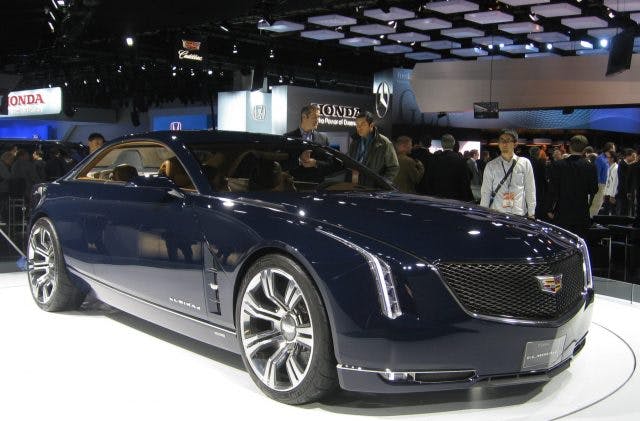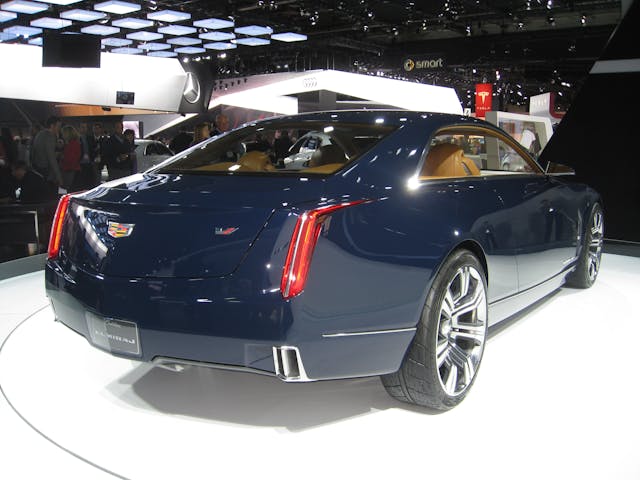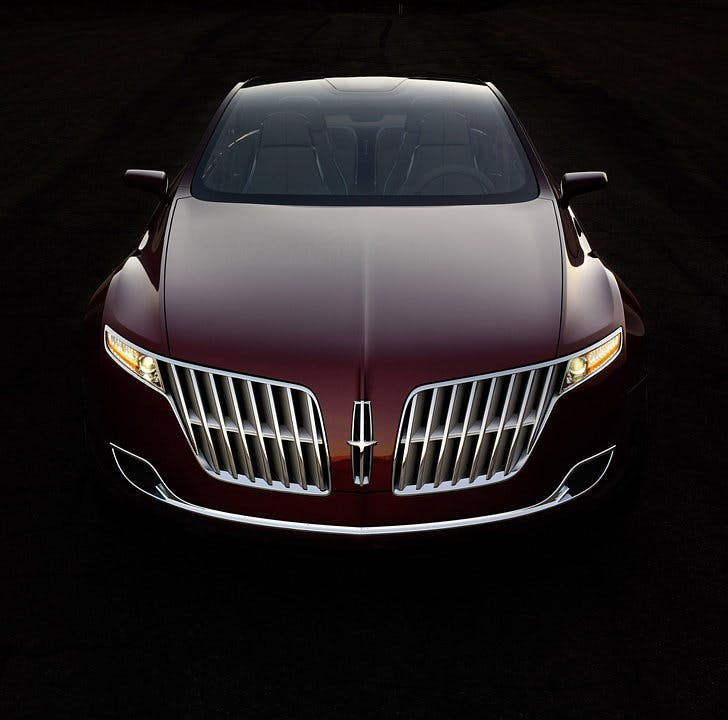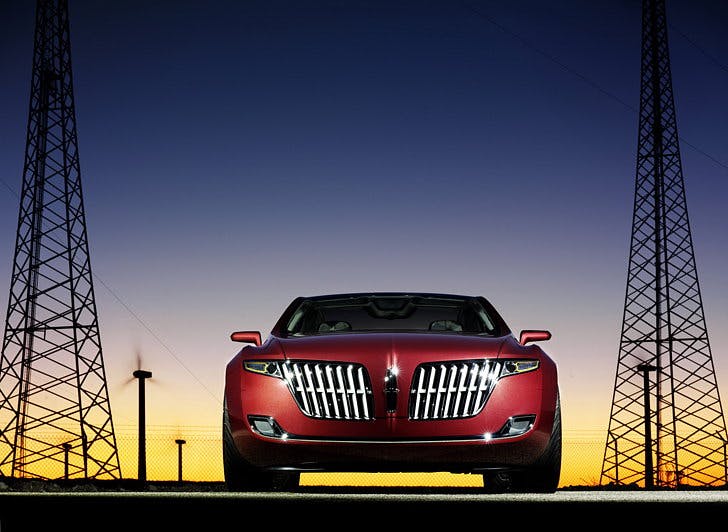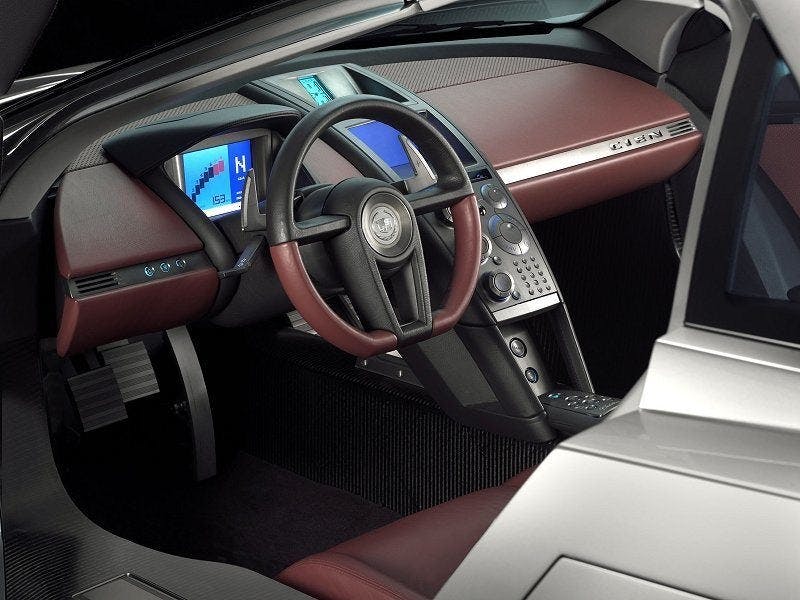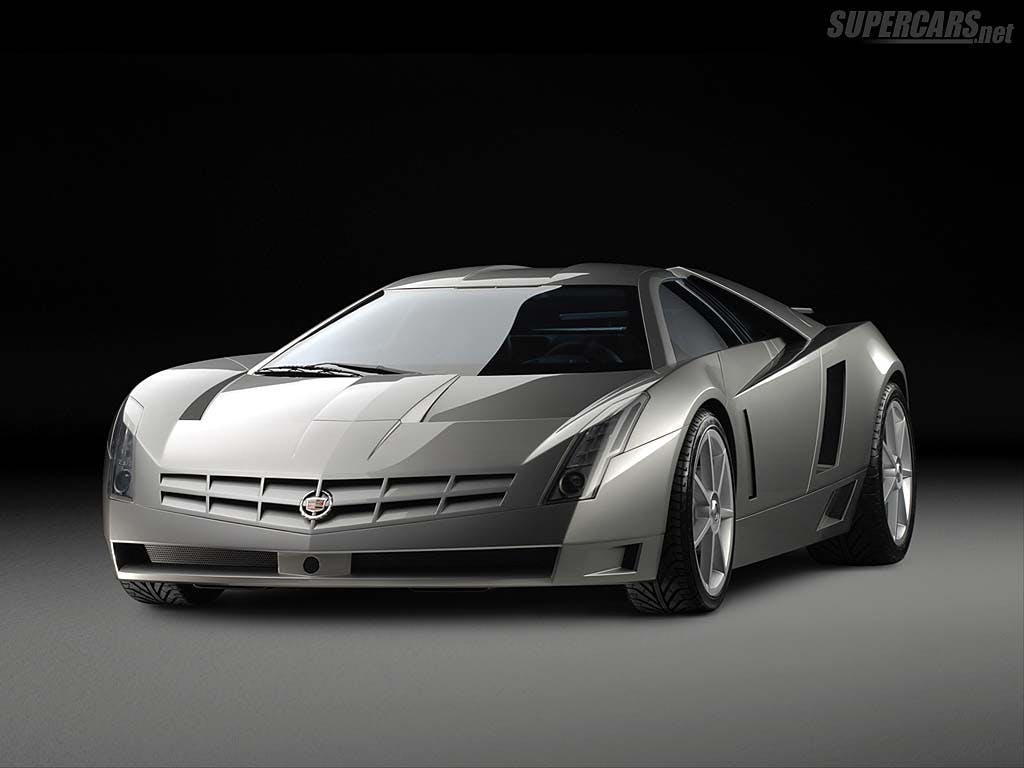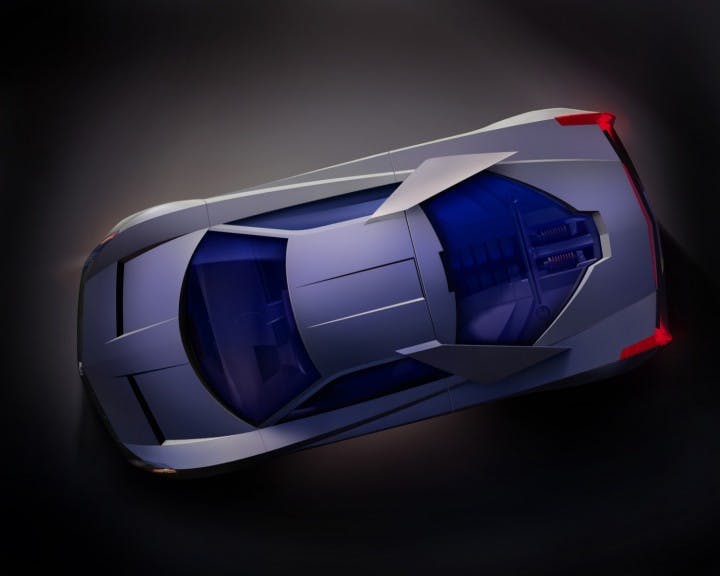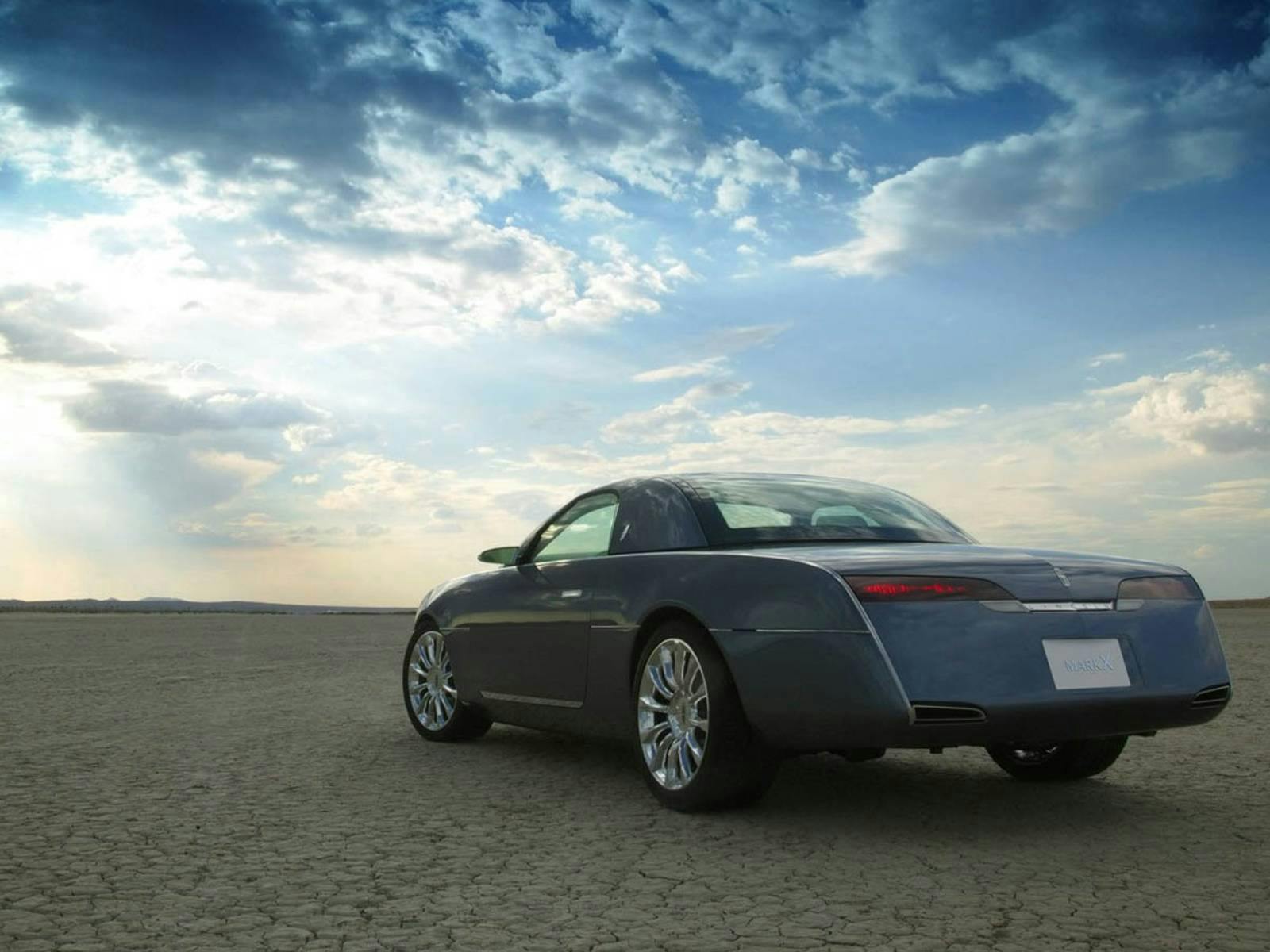Media | Articles
12 Detroit luxury cars that died on the show floor
For what seems like decades, American car enthusiasts have clamored for domestic automakers to make a serious effort to compete in the luxury-car segment. Brands such as Cadillac, Lincoln, and Imperial pretty much invented the full-size luxury sedan, but those U.S. brands have long since yielded to the German and Japanese. It has, in fact, been decades since Toyota upset the automotive apple cart with the Lexus LS400 in 1990.
Finally, Cadillac has accepted the challenge—and raised its sights even higher. Revealed in concept form last week, the $300,000 Celestiq leapfrogs the Lexus LS, Mercedes-Benz S-Class, and BMW 7 Series to challenge Rolls-Royce and Bentley. Caddy’s battery-powered flagship will be handbuilt to customer specification at GM’s Tech Center in Warren, Michigan.

Of course, Detroit has tried to step into the ring multiple times since the LS400. In the past twenty years, the Big Three debuted a number of promising luxury concepts that positive reactions from consumers, dealers, and the automotive press. If not ready for immediate production, most looked quite feasible—that is, if C-suite executives had the guts. On second thought, perhaps that’s unfair to the people running the domestic automakers. As attractive as these cars were to enthusiasts, by the time some of them would have come to market, the business case had evaporated.
We’ll never know whether these high-class studies would have succeeded, but we can wonder, can’t we? Here are 12 concept luxury cars introduced by the American automakers that never made it off the display stand. While a couple of them might be better described as supercars, I think it’s safe to say that anything with a projected retail price in the six figures is a luxury item.
2001 Lincoln MK9

The Lincoln MK9 was introduced at the New York Auto Show in 2001, at a time when Lincoln decided to imitate European luxury automakers’ penchant for alphanumeric designations, as opposed to model names. The problem was that Lincoln chose a combination of letters and numbers that evoked some giants in its history: the Continental Mark series, starting with the landmark Mark II in 1956, through the then-recently retired Mark VIII, last sold in 1998. One would think that the MK9 would at least be pronounced “Mark Nine,” thus positioning the two-door as a descendant of the Mark III personal luxury coupe—but no. Lincoln brand managers insisted the ongoing pronunciation of MK branded vehicles would be “Em Kay.” Were they embarrassed by the big land barges of the 1970s and ’80s?
Marketplace
Buy and sell classics with confidence
The MK9 rode on a stretched version Ford’s DEW98 platform, which was also the basis of the Lincoln LS, 2003 Ford Thunderbird, and the Jaguar S Type. The traditional, rear-wheel-drive platform had independent rear suspension with coil springs at all four corners. The exterior styling, by Gerry McGovern, who later headed Land Rover’s design department, features a long hood fronted by Lincoln’s waterfall grille (then a defining characteristic) with a big star in the middle. In general, the MK9 tried to reimagine the classic ’61 Continental and its long, bladed fenders and belt line for the 21st century. A chrome trim line running most of the length of the car gave it a retro touch, complemented by supposedly functional vents behind the front wheels, flush aluminum door handles, and 22-inch ten-spoke alloys.

The MK9’s interior was trimmed in chocolate brown, with lipstick red leather and brushed aluminum. An aluminum console cascaded down the dashboard, flowing the length of the passenger cabin. In the early 2000s, lacquered wood finishes were quite popular with luxury automakers. The MK9 sports dark cherry wood floors and a white leather headliner with fiber optics that lit up like a starry nighttime sky. The seats were modeled after the famous Eames Lounge Chair, designed by the influential husband and wife team of Charles and Ray Eames. The Eames met while attending the Cranbrook Academy of Art in suburban Detroit, taught there, and their work has been popular with the Detroit design community. Just as the Eames chair comes with a matching ottoman, the MK9’s red-upholstered front passenger seat boasts a foot rest trimmed in leather and aluminum.

Since it was based on a production vehicle, the MK9 was fully functional. When Ford conducted one of its periodic auctions of concept vehicles to raise money for charity in 2010, the MK9 sold for an impressive $101,750.
2004 Lincoln Mark X

By 2004, Lincoln had reverted to traditional names, and the Roman numeric Mark X (pronounced “Mark 10”) debuted at the 2004 North American International Auto Show (NAIAS) in Detroit. It was a convertible take on themes introduced with the Em Kay Nine.
Also based on the Thunderbird, the Mark X swapped the T-bird’s soft top and removeable hard top with a folding metal roof with a panoramic glass insert. The Mark X’s interior was, per Ford’s press release: “dressed in Lime Sorbet with white Corian accents, polished aluminum, dark chrome, natural grain leather seating surfaces, plush sheepskin flooring and tailored tone-on-tone stitching throughout. Its four-spoke, power-adjustable steering wheel also is leather wrapped.”

Lincoln chief of design Marek Reichman was responsible for the exterior design, which did riff on some of the MK9’s themes. The waterfall grille, however, was replaced with Lincoln’s new egg-crate affair, a throwback feature from the 1960s. The Mark X was shorter than the MK9 by more than a foot, and had slightly smaller, 21-inch chromed aluminum wheels. A functional vehicle but, like most modern concepts, not street-legal, the Mark X was powered by a 280-hp 3.9-liter DOHC V-8 paired with a five-speed automatic transmission.

While it was close to production-ready, the Mark X was born into the wrong time: Sales of the Thunderbird were waning, and Lincoln decided that the market was then ripe for a traditional, personal-luxury car.
Speaking of brandnomenclature, the Mark X was not the first time that name was used for a Lincoln concept, at least phonetically. In 1992, Lincoln showed the “Marque X” concept, a convertible based on the then-new Mark VIII.

The Mark X was sold by Ford at the same 2010 auction as the MK9 and, in a remarkable coincidence, it fetched the same $101,750 price. Four years later, it changed hands for $129,250.
2002 Lincoln Continental Concept

The end of the 20th century and beginning of the 21st saw a wave of nostalgia sweep across the auto industry. Retro( more properly, “retrofuturism” was in), and modern cars adopted a vintage look. There was VW’s New Beetle, Chrysler’s PT Cruiser, and Ford’s reissue of the Thunderbird. The Lincoln Continental Concept introduced at the 2002 Los Angeles Auto Show fit nicely into that ethos, expressing the look of the classic 1961 Continental for a modern audience. Perhaps the most eye-catching homage was the suicide doors, which opened a full 90 degrees. One thing the ’61 Conti didn’t have but the ’02 concept did was a powered trunk lid that opened vertically on a parallelogram linkage. Beneath it, a bumper-level draw slid out to reveal a bespoke set of Zero Halliburton luggage.
The interior featured indirect fiber-optic lighting for the headliner and door panels along with the use of LEDs, features that have since proliferated throughout the automotive world.

Apparently two versions of the ’02 Continental concept were made, a display-only “pushmobile” used at some car show and a fully functional vehicle powered by a 414-hp V-12 engine (created by mating two Duratec V-6s, a trick that showed up on other FoMoCo concepts of the era), with a six-speed automatic transmission, four-wheel disc brakes, multilink suspension front and rear, and 22-inch aluminum wheels. The static display car sold for $15,400 in 2010 and again in 2014 for $27,500. The functional concept sold for $56,100 at that same 2010 sale.
Responses from the public and press were almost uniformly positive, but it would be more than 10 years before Lincoln introduced a new Continental. Thankfully, when it did offer the new Conti, it was available in a coach (or “suicide”) door edition.
2007 Lincoln MKR

Revealed at the 2007 NAIAS in Detroit, the MKR, designed by a team led by Peter Horbury, was introduced at a time when the Mercedes-Benz CLS and other swoopy “four door coupes” were becoming popular. Powered by a twin-turbo, direct-injection 3.5 liter V-6 with 415 hp that introduced Ford and Lincoln’s TwinForce engine branding, the MKR was supposed to presage Lincoln’s new styling theme, billed as “elegant simplicity.”
Exterior design, headed by Gordon Platto, featured a high beltline with a chamfered surface that ran the length of the car, a cantilevered roof that transitioned to a wide C pillar, full-width horizontal taillights, upward swinging doors, and 10-spoke, chromed 21-inch wheels. The most dramatic exterior styling cues were yet another new grille—the split “bow wave,” said to be based on that of the classic 1940 Lincoln Continental Cabriolet—and an expansive glass roof that integrated a structural Lincoln star. The tread of the MKR’s custom Michelin tires also bears the Lincoln star.

It’s possible that Platto’s team settled on a glass roof to show off the impressive interior, promoted as “guilt-free” luxury, filled with premium amenities that were environmentally friendly. The instrument panel is made from a piece of recycled black oak that extends from left to right, flowing down into a two-level center console. Ice-blue ambient lighting illuminated the interior, which feature self-standing “floating” seats made with soy-based foam, glossy exterior shells, and upholstered with cashmere leather tanned in an environmentally conscious chromium-free process.

2003 Mercury Messenger

While it wasn’t branded as a Lincoln, I’m including the Mercury Messenger concept because a grand touring sports coupe could have been part of Lincoln’s portfolio. (Also because I think it’s a very handsome automobile and deserves attention.) “In my opinion, it’s as good looking as any Ferrari,” concept vehicle collector Joe Bortz, who owns the Messenger, says. “This car could’ve saved Mercury.”
The Messenger was supposed to send the message that moribund Mercury was about to undergo a rejuvenation. Unfortunately, the brand would die just seven years later.

How a two-seat high performance sport coupe could have saved a brand known for its sedans is an open question. I suppose that product planners at Mercury saw the concept as something akin to the original Cougar, that brand’s upmarket version of the Mustang. As a matter of fact, there are styling motifs on the Messenger that evoke the 1961 Cougar II concept car, particularly around the greenhouse. That vehicle, owned by the Detroit Historical Museum, was built on one of Carroll Shelby’s tubeframe Cobra chassis, but the Messenger concept was a much more modern design, based around an hydro-formed aluminum monocoque. While the Messenger show car had a minimal electric drivetrain to help it climb on and off display stands, it was otherwise fully engineered, with the shell constructed by Italy’s Stola Group.

The front-engined, rear-wheel-drive Messenger wore 19-inch, turbine-style wheels up front and 20 inchers in the back, clad in 275- and 305-mm rubber, respectively. An all-aluminum, 460-hp, DOHC version of Ford’s 4.6-liter modular V-8 was destined for the engine bay. While the Messenger actually had no real powerplant, the rest of the vehicle appears to have been fully fitted, with four-wheel independent suspension and Brembo disc brakes. The likelihood of Ford building a relatively expensive, aluminum-bodied GT for what would have been a niche market was fairly slim, even though it did have an available rear-drive platform in the correct size (the Mustang’s), and by 2003 had already offered the SVT Mustang with independent rear suspension.
As mentioned, Ford sold a number of its concept vehicles at auction to benefit children’s charities in 2010. The Messenger was one of them and it sold then for $52,250 to Texas collector David Diseire. Diseire downsized his collection in 2014, selling the Messenger in a no-reserve auction to Joe Bortz for about half of when he paid for it, $27,500. Bortz originally planned to make the Messenger fully functional, with a crate 4.6 liter V-8 and automatic transmission, but decided to leave the concept as-is.
2003 Cadillac Sixteen

Few concept cars have gotten as much attention as the 2003 Cadillac Sixteen did. The engine headlined the conversation: A naturally aspirated, 1000-hp, 829-cubic-inch (13.6 liters) V-16 that was essentially two fourth-generation LS V-8s stacked end-to-end by Katech (which also developed a V-4 version of the LS for the Motus motorcycle project).
The Sixteen made an equally strong visual statement with an outrageously long hood and smooth, extended flanks. It had no exterior door handles or traditional B-pillars and sat on massive, 24-inch polished aluminum rims. The Sixteen harkened back to the original Cadillac V-16 in 1930 and, like that original sixteen-cylinder, the LS-based mill also got a once-over from GM’s styling department. It also introduced displacement on demand for the automaker, a feature which debuted the following year on GM production vehicles. To help maneuver such a long vehicle, the Sixteen was equipped with computer-assisted “Quadrasteer” four-wheel steering, generating opposite lock at low speeds and parallel steering at high speeds. While the Sixteen ran and drove, press drives, even with James May at the wheel on Top Gear, were limited to 40 mph.

Another touch from the 1930s was the center-hinged butterfly hood though, as befitting a 21st century car, the hood opened under its own power. The interior featured hand-stiched upholstery in Tuscany leather, a Bvlgari clock in the dashboard, and a solid crystal Cadillac logo in the steering wheel.

General Motors, unfortunately, never had any plans to put the Sixteen into production. If it had been produced, it likely would have been priced to compete with Rolls-Royce and Bentley, just like the Celestiq.

2002 Cadillac Cien

While the headline for this article reads “Detroit,” the Cadillac Cien actually had its origins in merry olde England (much like the “American” Ford GT40 that beat Ferrari at Le Mans in 1966).
At the time, Detroit didn’t have much experience building carbon-fiber-bodied, V-12-powered, mid-engine supercars. The Cien was designed by Simon Cox, who headed General Motor’s U.K. styling studio. The 750-hp, 7.5-liter, 60-degree “Northstar XV12” engine was actually built by Cosworth in Northampton and the rest of the car was fabricated and assembled by Prodrive near Banbury. An actual automobile, not a speed-limited show car, the Cien was track-tested by Motor Trend. The Cien, which means “100” in Spanish, was meant to celebrate Cadillac’s upcoming centennial in 2003. Some sources say that the development of the mid-engine Cien was at least partially influenced by the Ford GT project, which was revealed as a concept the same year.

The Cien could have been a contender, even against the Ford. It boasted a carbon-composite monocoque, inboard pushrod suspension, a paddle-shifted six-speed gearbox, and electronically controlled air inlets and outlets to cool that V-12. Unlike the Ford GT, however, General Motors never put the Cien into series production.
According to the U.K.’s Telegraph, while GM product chief Bob Lutz funneled the development money elsewhere, the automaker did consider a limited run of up to 300 Ciens a year, even sending John Heinricy and Dave Hill from the Corvette team along with GM executive Mark Reuss to England on a feasibility visit to TWR and Prodrive. Eventually, though, Reuss told Autoweek that the business plan for a $200,000 Cadillac supercar just didn’t work out, though he made a point of saying that the Cien wasn’t completely dead.
“Right now, we’re deciding not to spend the money on it, but that doesn’t mean it couldn’t come around again in the future,” Reuss said. “In the past that would have been the final decision, but today we realize we ought to have a couple of shelves full of products we go back and do, depending on the situation.”

Although the Cien never made it to the streets, it has been involved in the production of a couple of Michael Bay movies, 2005’s The Island and 2014’s Transformers: Age of Extinction. It has also lived on in video games, featured in the Midnight Club and Gran Turismo series.
2011 Cadillac Ciel

When the Cadillac Ciel was introduced on the Concept Lawn at the 2011 Pebble Beach Concours d’Elegance, Cadillac fans clamored for a version they could park in their garages. A dramatic four-door convertible with a 125-inch wheelbase, suicide doors, and a hybrid drivetrain, the Ciel has classic rear-wheel-drive proportions. Thanks to those vertical headlights and taillamps, plus the egg-crate grille, the imposing Ciel is immediately identifiable as a Cadillac. An old-school Caddy, if you will, with no ambitions of Nüburgring lap times. No, the Ciel was a boulevard cruiser, which is why the producers of the 2015 Entourage movie used it instead of the 1961 Lincoln Continental convertible used in the eponymous TV series, no doubt to Lincoln’s displeasure.
Since the company had no rear-wheel-drive platform to fit the Ciel, GM actually went to the expense of creating a bespoke chassis for the show car. The Ciel, which means “sky” in French, was styled by Niki Smart at GM’s California design studio. The front end manages to be bold, as the buyer of a luxury car would want, without being ostentatious or vulgar like the visage of the Rolls-Royce Phantom. Also befitting a Cadillac, there is a fair amount of brightwork, with chrome strips tracing the hood’s power bulge back from the brushed finished grille, a character line at the rocker panel, and fender vents behind the front wheels. The polished, nine-spoke aluminum wheels are, as you’d expect in a luxury concept, an impressive 22 inches in diameter. The Ciel is finished in a shade of paint that Cadillac named Cabernet, saying it looked like “the best red wine under sunlight.”

Some Cadillac fans might have kvetched over the use of GM’s corporate 3.6 liter V-6 instead of a V-8, but with two turbochargers plus the hybrid system, the powertrain produced an impressive 425 hp and 430 lb-ft of torque, more than adequate to move a car the size of the Ciel with some alacrity. Powertrain quibbles aside, the Ciel is gorgeous.

Why an open car? “We’ve created a Cadillac that lets you touch the sky,” said Gael Buzyn, then lead interior designer at Cadillac. As with some of the other concepts here, the Ciel’s passenger cabin is bisected by a long center console, in this case made from the wood of a 300-year-old olive tree. Lest you worry that Cadillac killed it, the aged tree actually was taken down by a lightning strike outside of Naples, Italy. The olive wood is also used extensively throughout the rest of the interior on the doors and instrument panel. The seats are upholstered in sumptuous premium leather in a shade that matches the Cabernet paint, set off by trim covered in a similar grade of beige skins.
2013 Cadillac Elmiraj
As with the Ciel, the Elmiraj was unveiled at the Pebble Beach concours, although two years later, in 2013, wearing an exterior design headed by Niki Smart. A 205-inch-long, two-door four-seat companion to the convertible Ciel, the Elmiraj was named after the El Mirage dry lake bed in California that was used in some historic high-speed attempts. With a 500-hp, 4.5 liter, twin-turbo V-8, the Elmiraj might not set any land-speed records but it should move with urgency. (Perhaps Cadillac’s fitting of an V-8 was a reaction to the previously mentioned complaints about the Ciel’s six?)
While the Ciel rode on a bespoke chassis, the Elmiraj was based on an early-development version of GM’s full size RWD “Omega” platform (so it might have had a better chance at production) and had a 121-inch wheelbase. Even though it’s a little bit shorter than the Ciel, the Elmiraj was still an impressively long motor car, stretching more than a foot longer than the Bentley Continental GT. Of course, it rode on 22s. A pillarless hardop with apparently no exterior door handles, the Elmiraj presented a smooth profile to the world. Two-door coupes are not the most practical of cars, so, to ease egress for rear-seat passengers, the coupe’s front seats slid forward ten inches when the seat backs were tilted forward.

Though it was also an impressive vehicle, the Elmiraj was a bit more understated than the Ciel. Lead designer Smart described the design brief thus: “We wanted a mature statement for Cadillac where simplicity and subtle adornments create a purposeful presence.” Painted in a dark shade that Cadillac called Indian Blue, the Elmiraj showed that, with updates, the brand’s Art & Science design theme, which dates back to the Evoq concept of 1998, could still be au courant. At the same time it previewed future Cadillac styling, the Elmiraj was consciously influenced by designer Wayne Kady’s 1967 Eldorado.
Appropriate for a 21st-century automobile, the Elmiraj had high-tech features, including a navigation system that was integrated with a forward-facing video camera that overlaid the street view with navigation information. The feed was situated right in front of the driver, since the “analog” instruments were digitally rendered and transparent. Interior trim was a mix of titanium, hand-carved Brazilian rosewood, and camel-colored leather.
The Elmiraj was graced with Cadillac’s performance V-series badges and did in fact run, equipped with carbon-ceramic brake rotors clamped by beefy calipers to keep all 500 horses under control.
2006 Chrysler Imperial
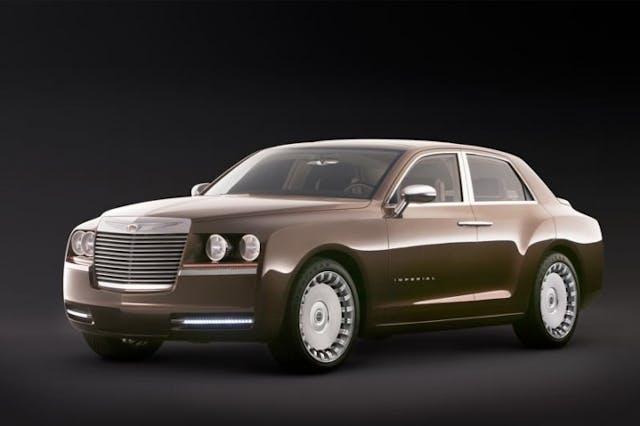
The Chrysler Imperial Concept seems to have been a German company’s idea of a fullsize American luxury car. Created as the DaimlerChrysler “marriage of equals” was coming to an end, the Imperial concept was essentially a longer, larger, and taller version of the 300C sedan with suicide doors—a Rolls-Royce on a budget, if you will. Like the Phantom, the Imperial was an imposing vehicle, if not universally acclaimed as attractive. Powered by a 5.7-liter version of the corporate Hemi engine, making 340 hp and 390 lb-ft of torque, the Imperial had a traditional, rear-drive layout and a five-speed automatic transmission. Standing over five feet tall, it was 214.1 inches long and 76.1 inches wide.

Exterior styling didn’t bother to hide the fact that the Imperial concept was based on the recently introduced 300, but it was clearly also larger, more luxurious, and a bit more elegant. The 300’s “Bentley” grille* was replaced with something a bit Rolls-esque, only with horizontal (not vertical) elements, flanked by a pair of round headlights on each side. LEDs, then a novelty, were used for front turn signals and taillights. A character line above the rocker panel flowed into the Imperial’s rear haunches, evoking the Chrysler D’Elegance concept car of the 1950s. A squared-off roofline made clear the Imperial’s luxury aspirations.
The raised truck lid with its creased backside added to the Imperial’s impression of solidity and gave the car a bit of a bustle-back or boat-tail rear, again reminiscent of classic European luxury. The quad taillights flanking the trunk echoed the front-end styling, and the whole concept was finished in a rich shade of chocolate brown.

The brown-and-beige interior had a relatively simple dashboard layout, said to reduce driver distraction, and featured ambient lighting, a separate rear seat console with its own infotainment system with wireless headsets, and powered retractable rear headrests. Like a proper luxury car, it had an analog clock placed prominently in the middle of the dashboard.
*According to Chrysler design chief Ralph Gilles, that’s what Chrysler designers called it, despite the fact that contemporary Bentleys may have borrowed that motif from some of Virgil Exner’s 1950s Chrysler concepts.
2004 Chrysler ME Four Twelve

The 2004 Chrysler ME Four Twelve concept was also the product of the 1998 merger with Daimler. One tradition the Germans picked up from the folks in Michigan was a strong statement at the annual North American International Auto Show, also known as the Detroit auto show. The previous year, Chrysler introduced the outrageous, Viper V-10-powered Tomahawk quasi-motorcycle. For 2004, the boffins in Auburn Hills built a car with a couple of extra cylinders, courtesy of corporate sibling AMG’s parts bin; a seven-speed dual-clutch Ricardo transmission; some carbon-fiber and some aluminum; and called it the ME Four Twelve. The name stood for “Mid-Engine, four turbos, 12 cylinders.” As with the Cien, Cadillac gave serious thought to series production. The fastest production car in the world could have worn a Chrysler badge—but it was not to be.
AMG’s 6.0-liter, all-aluminum V-12 got new cylinder heads, forged pistons, rods, and crankshaft, plus those four turbochargers (two per bank of cylinders), giving it a claimed 850 horsepower. That’s enough to make it one of the world’s most powerful cars almost a decade later. The transmission could perform shifts in just 200 milliseconds. The tub was a composite of carbon-fiber and aluminum honeycomb, giving the finished ME Four Twelve a weight of just 2888 pounds.
The power-to-weight ratio meant a 0-to-60-mph time of just 2.85 seconds, with a top speed of 250 mph. That’s in the Bugatti Veyron’s neighborhood. The way the math worked out, it would have been quicker to 60 mph than the Ferrari Enzo, quicker to 100 than the Porsche Carrera GT, and faster than the McLaren F1’s top speed of 240. At the drag strip it could theoretically have run a 10.4-second quarter mile with a trap speed of 146 mph.

Race-inspired pushrod suspension up front, double wishbones in the back, aluminum control arms and coil springs all around, and huge, 16-inch rotors with six piston calipers up front gave the ME Four Twelve track credibility. Steering was quick, at just 2.4 turns lock-to-lock. When Motor Trend took it around Laguna Seca, staffers said the car needed further development, was down on power, and had a recalcitrant transmission—but they determined that it was indeed fast.

There are two stories why the ME Four Twelve never went into the planned production of a few hundred cars a year. The first is practical: Engineering a one-off show car, even relatively fully engineered vehicle, is one thing. Production engineering in an age of government regulation is another. Even with a mostly off-the-shelf drivetrain, it probably would have required a nine-figure investment to get ready for production. Halo car or flagship, a business case must be made for any production vehicle.
The other story is political. According to Allpar, the Mopar fan site, the way the numbers worked out, the ME Four Twelve would have have been faster than the Mercedes SLR McLaren, and the folks in Stuttgart couldn’t have that. That wouldn’t have been the first time Chrysler engineers heard “Ve haff engineers in Stuttgart,” in a Swabian accent**. So much for the marriage of equals.
So that’s a dozen well-received concept cars that each could have been the flagship offering for a domestic manufacturer but, for one reason or another, never saw the light of day. In the comments below, please share your thoughts about them and any others that you think might belong on the list.
**A true story for another time.

